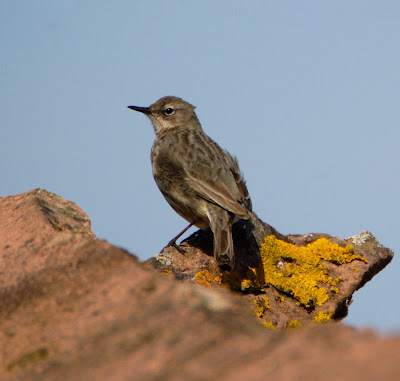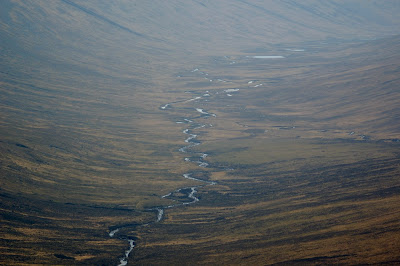As a child this was always one of my favourite routes: I have fond memories of hot summer days when I would find fat piles of ladder-patterned Adders scattered by the side of the path. Like an optical illusion, their perfectly camouflaged bodies would gradually emerge from amid the tangle of bracken and heather. In the sunshine their glaring eyes glowed ruby red.
'Narrachan' originates from the Gaelic word for Adder, so this path has long been known as a hotspot for this species. Walking up this path I could hear the stony 'chak' of stone-chats (Saxicola torquata) and the most distinctive spring sound: the calling of cuckoos (Cuculus canorus). The grass is dotted with violet, yellow and white: Common Dog Violets (Viola riviniana), Lesser Celandines (Ranunculus ficaria) and Wood Sorrel (Oxalis acetosella), respectively. I carefully checked the ancient dry stone walls, boulders and rocky outcrops for adders but was disappointed to find nothing, not even a lizard. The rule of adders seems to be that you only find them when you aren't actually looking for them!
Along the path I could see Green Tiger Beetles (Cicindela campestris) racing madly ahead of me.
 |
| Green Tiger Beetle (Cicindela campestris)
|
These beetles are high-speed predators and chase prey (mainly other insects) in a stop-start cheetah-like fashion, relying mainly on their sharp eyesight. The larvae construct burrows in sandy soil from which they ambush passing prey. The less common Cicindela hybrida, a purplish tiger beetle, is also found on Arran.
Before long I had my first glimpse of a Green Hairstreak butterfly (Callophrys rubi), perching on a willow branch. After I reached the crest of the hill and began the descent towards Laggan I found the North East-facing slope to be absolutely crowded with Green Hairstreaks! I spent a few hours happily following and photographing the males as they patrolled their territories.
 |
| Green Hairstreak butterfly (Callophrys rubi) male
|
 |
| Green Hairstreak butterfly (Callophrys rubi) male
|
Males and females are almost identical: both have irridescent, shimmering green undersides and dark brown uppersides (which are rarely seen because they always rest with wings closed). The uppersides of the male's wings have a small patches of scent scales.
The highly cannabalistic caterpillars are solitary and feed on a variety of foodplants including Bilberry, Broom and Bird's Foot Trefoil, often near anthills. This species is thought to a have an association with ants (like much of the Lycaenidae) and the pupae can emit squeaks which encourage ants to bury them within their nests.
At Cuithe, North of Laggan, there are a number of ruined buildings with only the foundations remaining. The steep hillside has some interesting birchwood.
The shoreline from Laggan over the Cock of Arran changes from red sandstone rockpools to grey boulder beach, with some caves on the raised beach at the Fairy Dell. Birds I encountered along this stretch are: Shag (
Phalacrocorax aristotelis), Common Sandpiper (
Actitis hypoleucos), some Rock Pipits (
Anthus petrosus) and a group of Eider (
Somateria mollissima).
 |
| Eider (Somateria mollissima) male
|
 |
| Eider (Somateria mollissima) male
|
 |
| Eider (Somateria mollissima) female
|
 |
| Common Sandpiper (Actitis hypoleucos)
|
Common sandpipers are widespread summer migrants which feed on small invertebrates and are usually very solitary.
 |
| Rock Pipit (Anthus petrosus)
|
 |
| Rock Pipit (Anthus petrosus)
|
Pipits are amongst the most unobtrusive and ubiquitous birds. All four British species look very similar and have rather unmemorable calls but are found in different habitats. The Rock Pipit's scientific name means 'flower of-the-rocks' and it is found along rocky coastlines. It can also be distinguished from other pipits by its much darker, greyer colouration and muddier, less-contrasting streaks on its belly. The legs are dark grey unlike Meadow and Tree Pipits, which have pink legs.












































